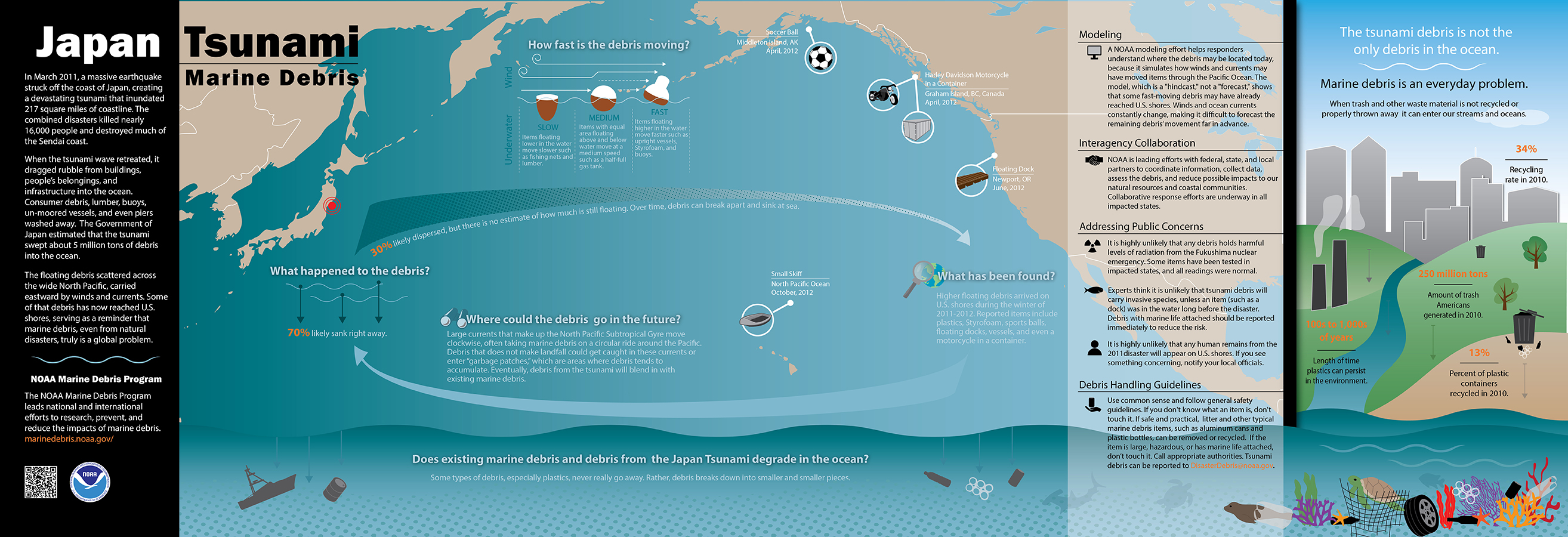How do natural disasters contribute to marine debris?
The high winds, heavy rains, storm surge, and flooding associated with natural disasters can pull large structures and other articles into surrounding waters.

Click on graphic to enlarge. The Japan earthquake of 2011 and resulting tsunami destroyed whole communities, pulling an estimated five million tons of debris into the surrounding waters. | Having trouble reading this tiny text? Get a better view! Download this infographic.
Natural disasters such as hurricanes, tropical storms, tsunamis, and landslides have the potential to generate a tremendous amount of marine debris. The high winds, heavy rains, storm surge, and flooding associated with these disasters can pull large structures, household articles, and outdoor items into surrounding waters.
As seen in the wakes of Hurricanes Katrina and Rita, and post-tropical cyclone Sandy, some debris remains in shallow waters, creating safety hazards for people, obstructing navigation channels, and threatening natural resources. Immediate action is needed to assess and remove the debris in order to maintain navigation routes, ensure safe boating and recreational activities, and protect sensitive ecosystems.
Strong tides and currents also carry the debris out to sea, where it may take months to years to reach land again. The Japan earthquake of 2011 and the resulting tsunami destroyed whole communities, creating an estimated five million tons of debris. Much of this debris remained along the coast of Japan, but a portion of it was washed into the Pacific Ocean. While some of the wreckage eventually sank to the ocean floor, debris from the disaster occasionally continues to appear on U.S. and Canadian shores.